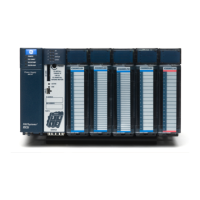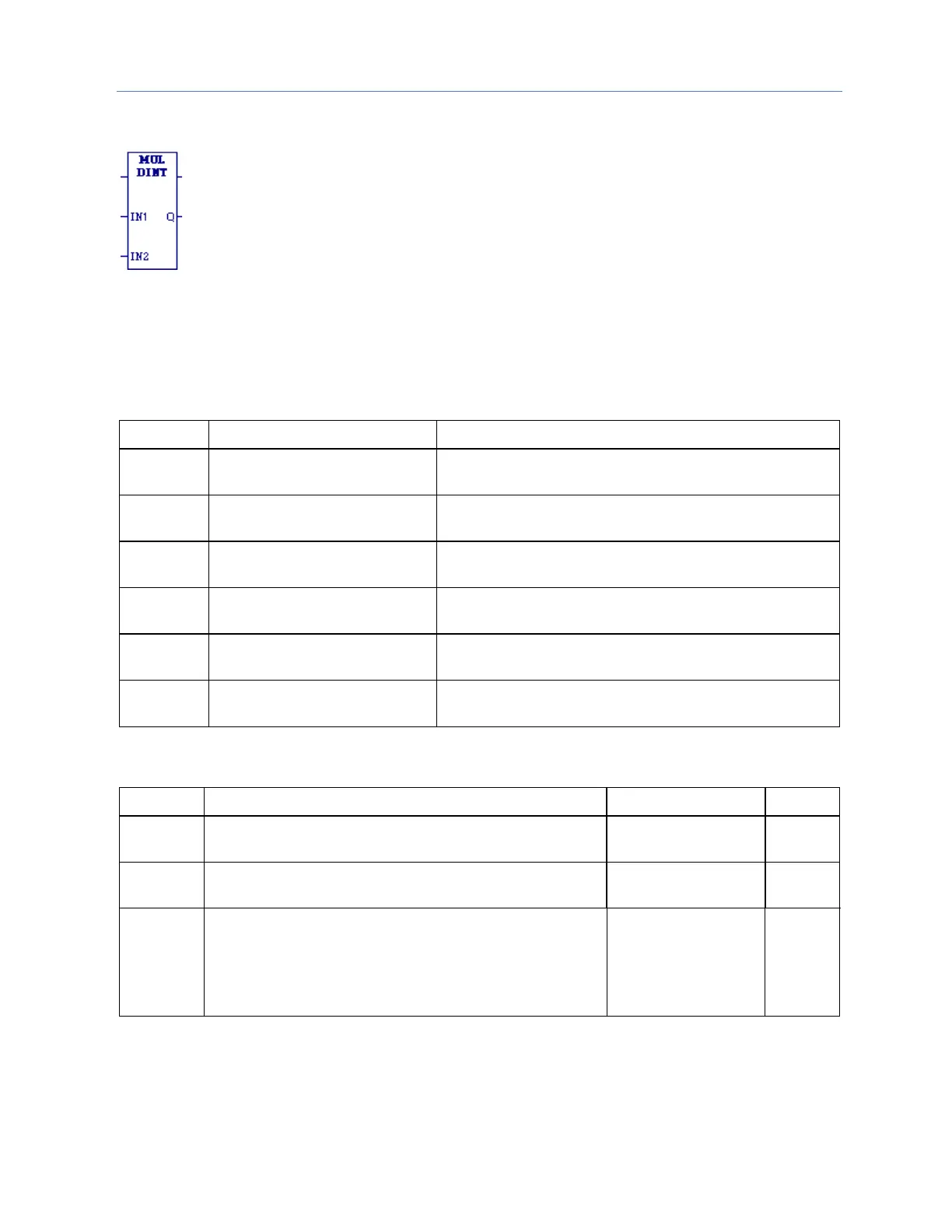Chapter 4. Ladder Diagram (LD) Programming
GFK-2950C February 2018 197
4.10.6 Multiply
When the MUL function receives power flow, it multiplies the two operands
IN1 and IN2 of the same data type and stores the result in the output variable
assigned to Q, also of the same data type.
The power flow output is energized when the function is performed, unless an
invalid operation or Overflow occurs. (For more information, refer to the
section on Overflow.)
Mnemonics:
MUL_DINT
MUL_INT
MUL_MIXED
MUL_REAL
MUL_LREAL
MUL_UINT
Note: MUL_MIXED uses mixed data types. Be careful to avoid overflows.
The following REAL and LREAL operations are invalid for MUL:
▪ 0 x ∞
▪ I1 and/or I2 is NaN (Not a Number).
Q(16-bit) = IN1(16-bit) × IN2(16-
bit)
base 10 number with sign, up to 5 digits long
Q(32-bit) = IN1(32-bit) × IN2(32-
bit)
base 10 number with sign, up to 10 digits long
Q(32-bit) = IN1(32-bit) × IN2(32-
bit)
base 10 number, sign and decimals, up to 8 digits long
(excluding the decimals)
Q(64-bit) = IN1(64-bit) × IN2(64-
bit)
base 10 number, sign and decimals, up to 17 digits long
(excluding the decimals)
Q(16-bit) = IN1(16-bit) × IN2(16-
bit)
base 10 number, unsigned, up to 5 digits long
Q(32-bit) = IN1(16-bit) × IN2(16-
bit)
base 10 number with sign, up to 10 digits long
The first value to multiply; the value to the left of the multiply
sign (×) in the equation IN1 × IN2=Q.
The second value to multiply; the value to the right of the
multiply sign (×) in the equation IN1 × IN2=Q.
The result of IN1 × IN2. If a MUL operation on signed
operands results in Overflow, Q is set to the largest possible
value and there is no power flow.
If a MUL_UINT operation results in Overflow, Q wraps
around.
All except S, SA, SB, SC
and constant

